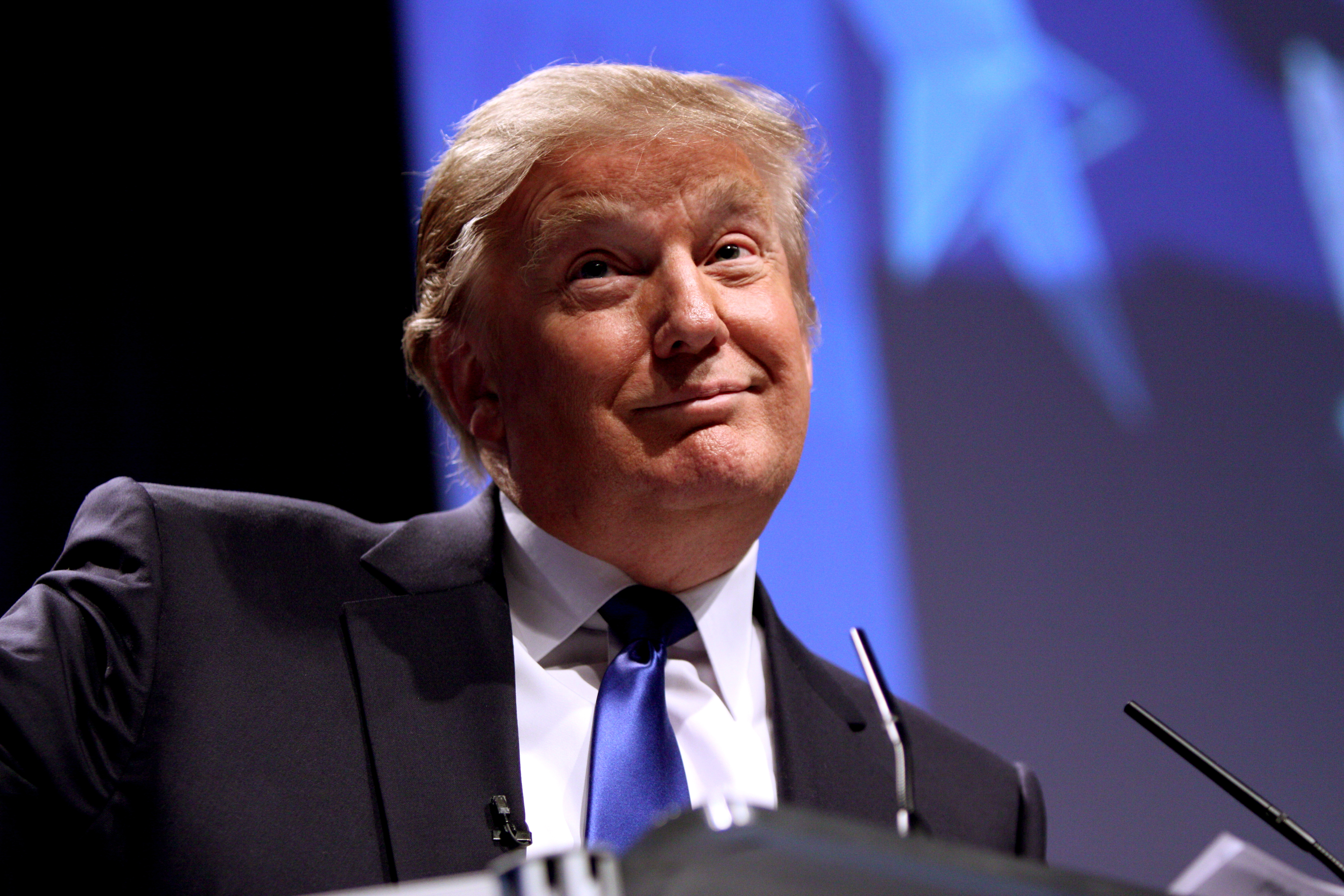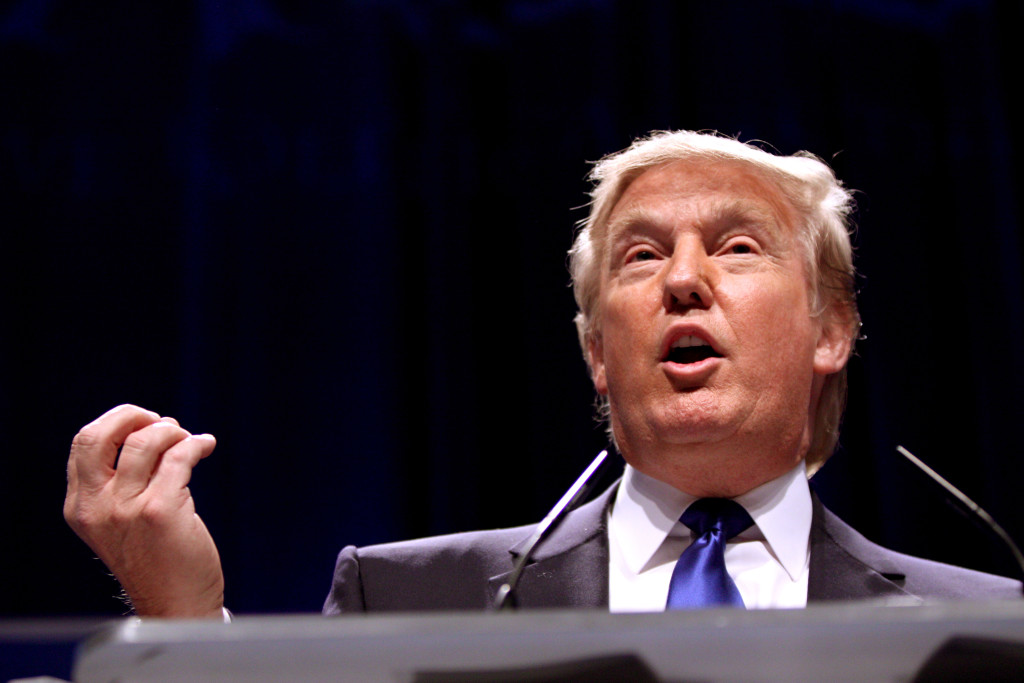Donald Trump: The Master of Debt and King of Hypocrisy
 Trump's proposed tax policies are likely to destabilize the US national debt. https://flic.kr/p/9hKqAn
Trump's proposed tax policies are likely to destabilize the US national debt. https://flic.kr/p/9hKqAn
The post-Obama period will be crucial in terms of securing and consolidating the positive economic growth that has developed in the past 8 years. The United States’ economy has returned to its pre-recession size, with a robust job market and low unemployment rates. The 2016 deficit is estimated to be $616 billion, with a national debt that is rising steadily towards $20 trillion. Successive governments habitually pledge to stabilize and reduce the national debt but leave office with a more monstrous deficit which points to the fact that the future national economic plan is integral now more than ever. With the pledges made by Donald Trump to fuel economic growth, financial markets have adjusted predictions for economic growth and concentration of wealth. The shares of the S&P 500 (which measures the value of stocks of the 500 largest corporations) has increased by 4% due to predictions of larger stock values. However, Trump’s tax policy and expenditure plans will undoubtedly destabilize the national debt and simultaneously reduce revenue.
President-elect Trump’s tax plan will reduce marginal tax rates, and allow business to expense new investments without deducting interest expense. More importantly, the tax plan reduces taxes at every income level, with high-income groups receiving the biggest cuts. Mr. Trump plans to lower the top income tax rate from 39.6 percent to 33 percent. The proposal also includes cutting the corporate tax rate by half to 15%. While these tax cuts may hypothetically attract investment and savings, the damaging impact on revenues and debt outweigh any increase in foreign investment. The income effect (where more income leads tax payers to work, save or invest less) outweighs the substitution effect (where increased income leads to more saving and investment). Tax cuts increase post-tax wages which means that consumers find it easier to obtain their desires, such as paying for college or buying a car. Due to the fact that consumers feel richer, the majority decide to work, save, or invest less. Interestingly, foreign investment will also be on a downward trend given his protectionist pledges such as withdrawing from the North American Free Trade Agreement (NAFTA) and the Trade Pacific Partnership (TPP). If these measures dissuade foreign companies from investing, then the burden to provide income for his plans automatically falls on American consumers. Trump’s plan would reduce federal receipts between 2016 and 2026, with three-quarters of this revenue loss coming from individual incomes.
Moreover, this tax policy will cause the national debt to rise by $1.15 trillion between 2016 and 2026. Unless large cuts in government spending ensue, the national debt will certainly spiral out of control. In fact, cuts on spending are rather unlikely given promises to increase spending on defence and infrastructure. Trump’s bolstering of the military is likely to cost $100 billion more than the Pentagon has budgeted for and his $1 trillion infrastructure development plan is laughable at best considering that Trump expects to establish an infrastructure bank (with the source of income uncertain). He intends to offer tax credits to companies that invest in infrastructure, however this is a useless cycle.

For example, in the context of electrical grids, many private companies manage their own physical conditions, so under Trump’s plan these companies will receive tax credits for money that they planned to spend anyway. It is rather likely that companies might shift their investments towards projects subsidised by the government instead of introducing new capital into the economy. Added to that, this plan is likely to fund pointless projects. Given his rhetoric including statements such as “We are going to fix our inner cities and rebuild our highways, bridges, tunnels, airports, schools, hospitals”, it appears that Trump is hyperbolizing the needs of American infrastructure. Another reason why a reduction in spending is less likely is due to his vow to protect entitlement spending on programs such as Medicare and Social Security. These said programs continually strain the budget as the aging population increases and receives more rewards in entitlement benefits. In 2015 spending on Medicare accounted for 15 percent of the budget, and benefit payments totalled $632 billion.
Further, Trump’s plans to spur economic growth through low taxes will simply lead to a cycle of higher interest. The economic argument of increased income states that more spending will follow along with increased demand, which will foster an upward pressure on prices and therefore increase inflation leading to the Federal Reserve needing to increase the interest rate. Trump’s stimulus plan is poorly timed, especially in light of the Federal Reserve planning to raise interest rates in December. With unemployment at 4.6 percent, the economy is showing no sign of slack and no need for economic stimulus.
Following Trump’s nominations for key cabinet positions including Steve Mnuchin for Treasury Secretary, it is very unlikely that Trump will deliver on his promises to protect blue collar workers, including bring jobs back to the US. Mnuchin, a hedge fund manager and Hollywood producer, is just another Wall Street insider, which is ironic given that Trump s filling his cabinet with the same financial and political elites he criticized during his campaign. Some argue that Trump’s massive tax cuts may foster enough growth to balance his protectionism, however this said “protectionism” is also likely to crumble. Trump erroneously believes that re-negotiating trade deals such as NAFTA and TPP will attract manufacturing jobs back to the US. However, the majority of the manufacturing jobs lost since the turn of the century was due to automation rather than globalization and trade deals. Equally, blue collar workers will experience tax cuts but the top 1 percent of earners will see their average tax rate fall by the most percentage points (39.6 percent to 25 percent). Hypocrisy defines Trump’s post-election choices and policy formulations – his blue collar voters are in for a disappointment.
Mr. Trump’s policies in the long term will certainly force national debt to spiral out of control and he will find himself to be his own worst enemy. With the US economy showing little signs of slack, his poorly timed massive stimulus plan and tax cuts need to be reassessed. Financial markets are praying that Trump abandons the policies advocated in his campaign and that he disappoints his voters because he cannot successfully give them everything he promised at the same time. A stable national economic plan is needed now more than ever, and Trump has consistently failed to present such to the American citizenry.
